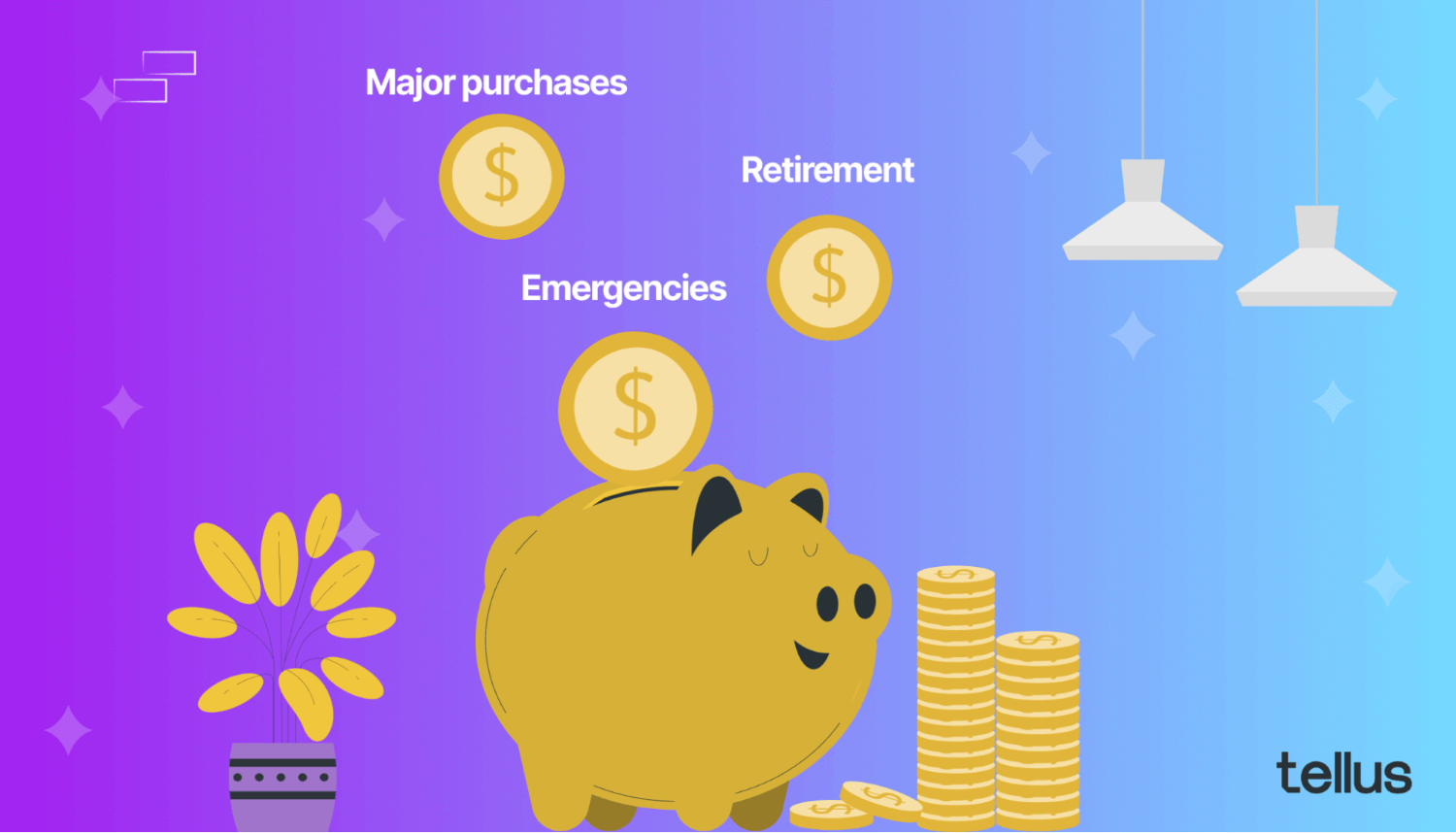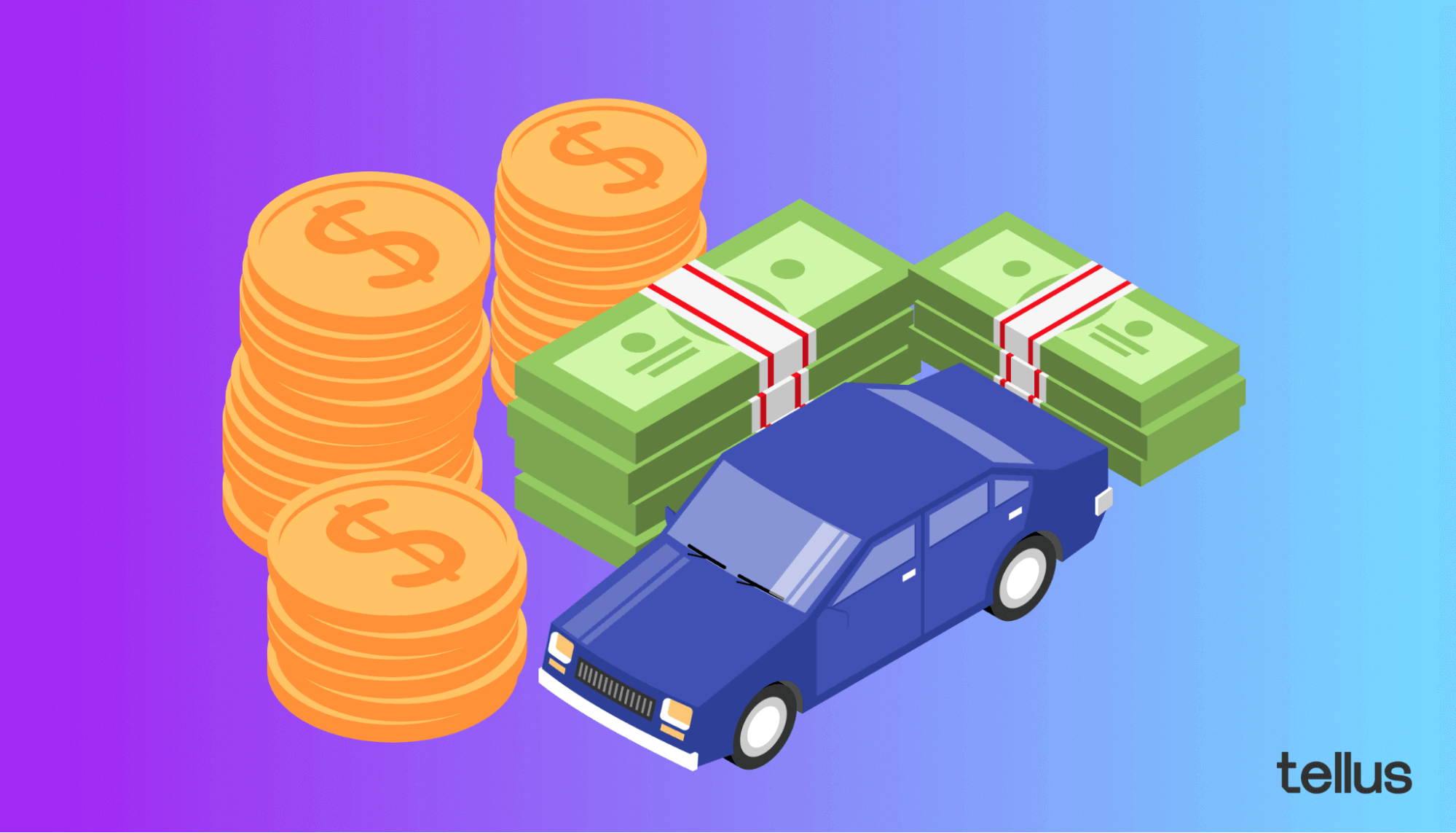
How To Save For A Car
Cars are an expensive and essential purchase. Learn how to save for a car and how to get the best deal when it’s time to buy.
Saving up a down payment will save you a significant amount of interest payments over the lifetime of your car. Most experts recommend having a 20% down payment for a new car. Use a car affordability calculator to see what kind of car you can afford. If you’re having trouble saving up, check out our saving strategies.
Aside from buying a house or paying for a wedding (which cost an average $28,000 in 2021), a car could be the next most significant purchase that you’ll make in your lifetime.
However, since cars cost thousands or tens of thousands of dollars, it can be challenging to save up for one.
Thankfully, there’s a straightforward process for saving up to buy your car. It holds true whether you’re buying your first car or trading in an old car for a new one.
In this article, you’ll learn how to save for a car. We’ll explain why you’d want to save instead of simply getting a $0 down loan. You’ll also discover ways of figuring out how much you need to save and how to get the best deal on your vehicle once it’s time to buy.
Contents
Why save for a car at all?
It used to be the norm that you’d need to have a deposit of at least 20% to buy a new car.
However, many dealerships now offer cars for a much smaller deposit or even $0 down.
This can be a tempting offer, but it might not be the best choice for you.
Getting a car for $0 down is less expensive in the short term and allows you to bring a car home without any upfront payments.
The downside is that you’ll end up paying more interest over the lifetime of your loan. Plus, the fees, sales tax, and delivery costs may be included in your loan, which will take longer to pay off.
Loans that require no money down or a small deposit typically come with a higher interest rate as well.
Since a new car loses a significant portion of its value as soon as you drive it off the lot, your loan will also have a balance of more than your new car is actually worth. This could be a big problem if you want to trade your car in again within a few years.

Most people don’t have enough cash on hand to buy a new car outright, though.
You'll most likely need to strike a balance between saving up a down payment and taking out an auto loan for the remainder.
The more you can save up to pay toward your car upfront, the smaller your monthly car payments will be, and the less interest you’ll pay.
Determine how much you need to save
When it comes to buying a car, one of the most common frameworks to determine what you can afford is the 20/4/10 rule.
Under this model, you save up a 20% down payment for the car. You finance the car for four years or less and keep the payments to 10% or less of your salary.
For example, if you earn $50,000 per year, your car payments should be no more than $5,000 per year (or around $417 per month.) If you qualify for a 48-month (or 4 year) loan at 5% and you have a $5,000 down payment, you can afford a car valued at approximately $23,000.
You can use an online car affordability calculator to help you figure out what you’re able to afford in your particular situation.
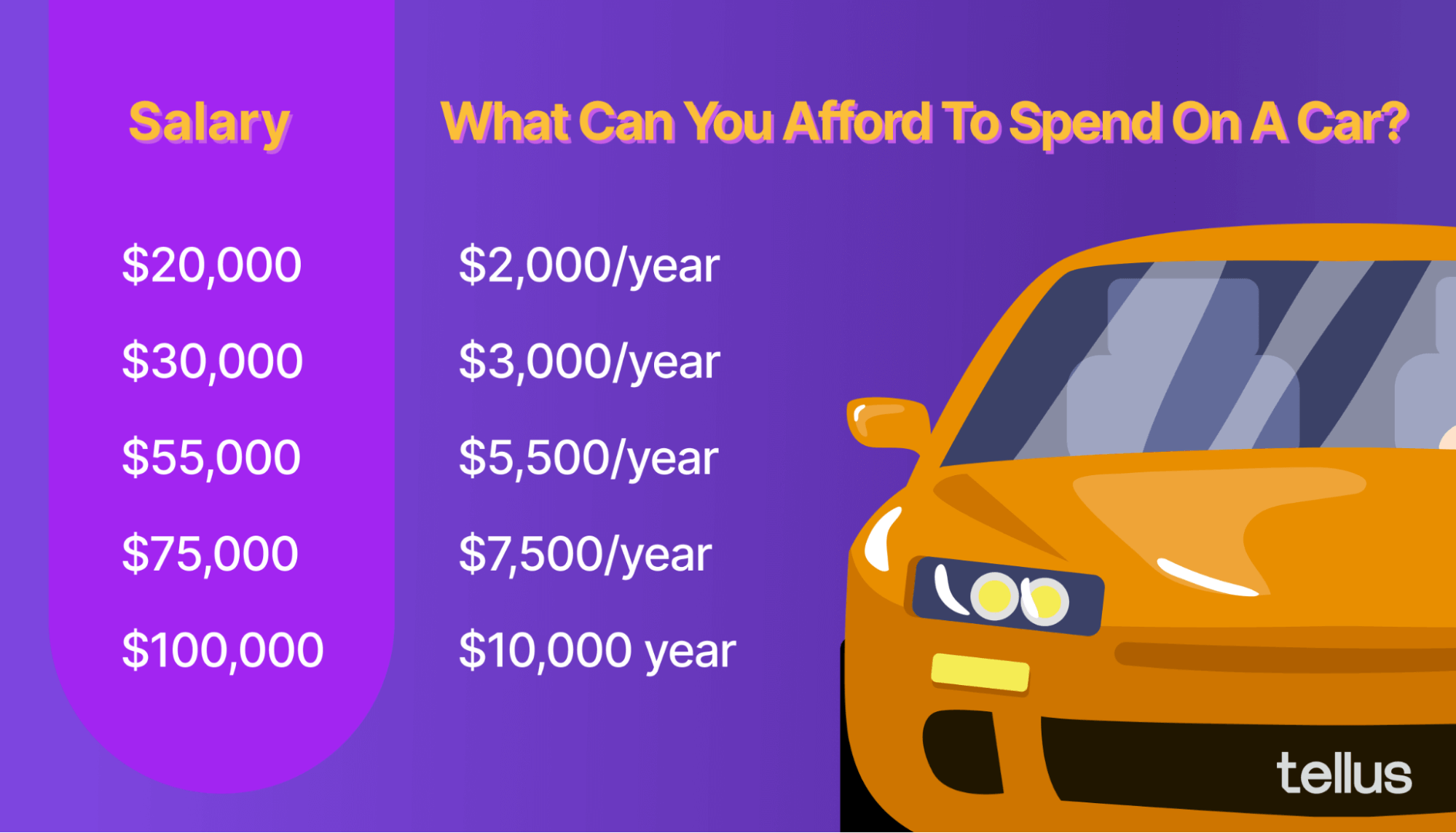
After your calculation, you might discover that the car you had in mind is out of your price range. In that case, you’ll need to adjust your expectations. You may need to consider another model or a less expensive used car.
Do you have a vehicle to trade in?
You might not have a down payment saved up in cash. But if you’ve got a current vehicle that you’ll be trading in, you can use that money toward the down payment on your new car.
Trading in your car is the most convenient option for getting rid of your old vehicle. You simply hand your car over to the dealership. However, you won't receive the best price for your car if you opt for a trade-in.
You might find that it’s worth the extra effort to sell the car yourself privately. The downside is that this will take up more of your time creating advertisements and arranging for strangers to come and check out your vehicle.
Consider other vehicle costs
A number of extra monthly expenses come with owning a car. They include things like insurance costs, registration, fuel, and regular maintenance.
All of these costs will easily add up to several thousand more dollars that you’ll need to spend every year to keep your car in running order.
You may want to leave some extra leeway for these costs by not buying the most expensive car that you can afford.
Ultimately, it’ll come down to what your car means to you and how much you’re willing to spend on it.
For some people, their car is just a way of getting from point A to point B, and they have little emotional attachment to it. For others, their vehicle might be a significant part of their personality and hobbies.
Leasing a car instead of buying
Instead of buying a car, you could always opt to lease one instead.
Leasing is essentially a long-term rental of a car.
Most car leases are for 24, 36, or 48 months. At the end of the lease, you simply return the car to the dealership. There’s no hassle of having to sell or trade-in.
Leasing doesn’t typically require any kind of down payment, except for people with bad credit scores. Leases also come with lower monthly payments.
Most experts advise that buying a car is usually a better long-term financial decision than leasing it. But there are some situations where it’s an attractive option. For example, if you’re someone who wants to drive a new car every couple of years or you don’t drive a lot but highly value the bumper-to-bumper warranty that often applies to new cars, leasing might make more sense for you.
A major downside of leasing is that you don’t own the vehicle. Lease agreements typically have stipulations about how many miles you’re allowed to drive the car each year.
If you end up going over your mileage limit or there’s excessive wear and tear to the vehicle at the end of the lease term, you may have to pay extra fees.
Cracked or chipped windshields or significant scratches and dents aren’t normally covered in a lease agreement, and you’ll be on the hook to pay to have them fixed.
How to save money for a car
Here are some strategies on how to save up for a car that you can start implementing today.
Create a dedicated savings plan
Most banks will allow you to open additional savings accounts at no extra charge. So you can have one dedicated to just saving money for a car.
The sooner you start saving, the more money you’ll have saved up when it’s time to buy your car.
Pay yourself first
You can have a portion of your paycheck automatically deposited into your car savings after you’ve set it up. That way, you don’t need to think about it or manually transfer money. You’re saving without any extra work.
You can start a Tellus Stack for your dream car and put your money on auto-pilot by setting up recurring transfers directly from your bank into this Stack.
Save any unexpected money that you receive
A bonus at work, your tax refund, or even money you receive for your birthday can significantly increase your car savings.
It’s unlikely that you budgeted for these unexpected windfalls, so you won’t miss the money if you put it straight into your savings.
Get a side hustle
A job on the side can earn you some extra money to put toward a new car.
If you already have a car, you could use it to drive for Uber or meal delivery services before trading it in for your new car.
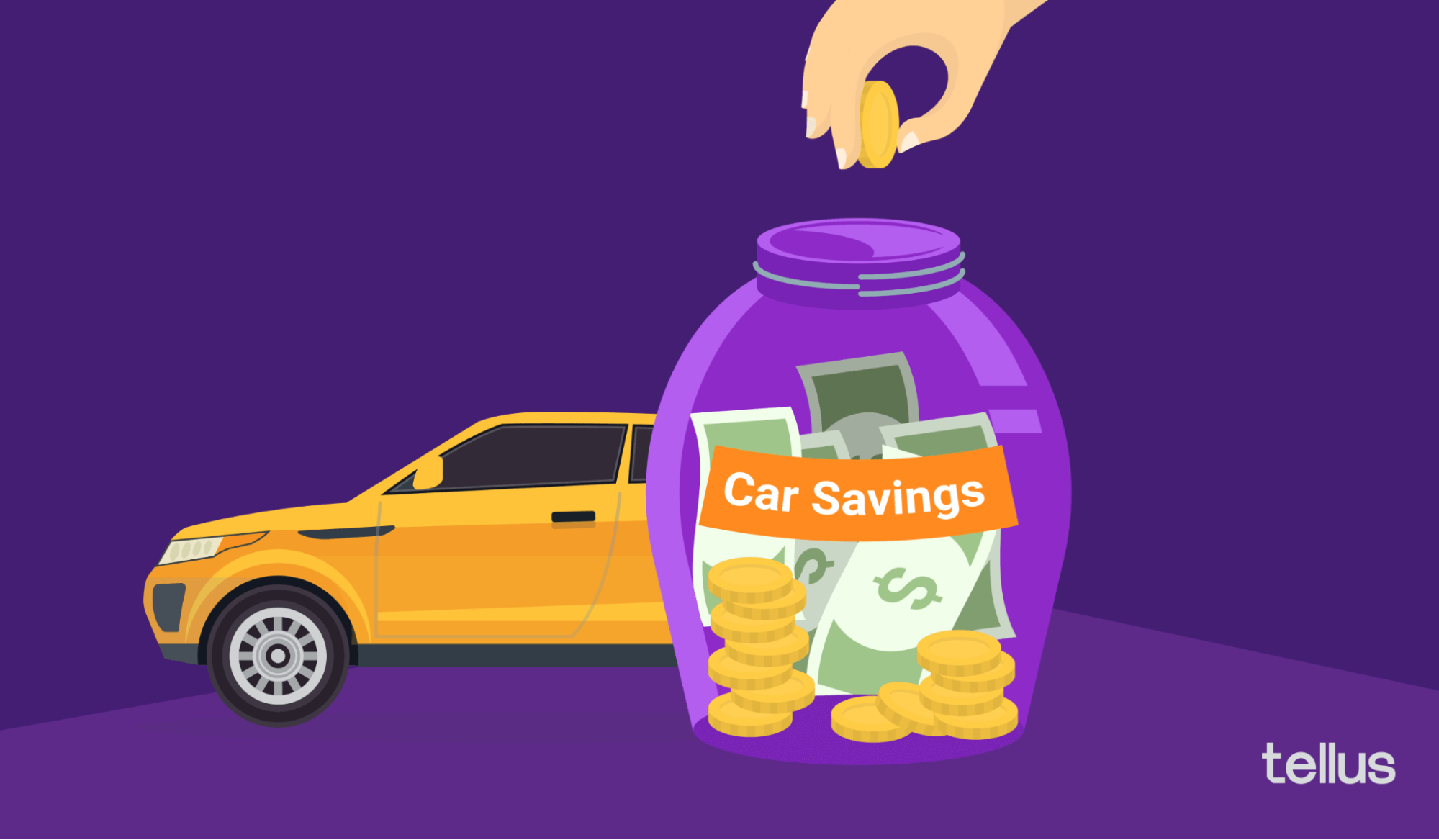
If you don’t currently have a vehicle, you could do anything from dog walking to teaching music lessons to earn a few extra hundred dollars per month.
Cut back on unnecessary spending
If you want to save up for a big purchase like a car, you might have to temporarily give up some luxuries like buying your coffee from Starbucks every morning instead of making it yourself.
Even temporarily changing your spending habits will help you save for a car.
Split your goals into smaller steps
It feels a lot more manageable to save $50 per week than to think of it as saving up $2,600 over the next year.
Slowly adding to your car savings on a regular basis will eventually get you to your savings goal.
Saving money when it’s time to buy your car
Once you’ve worked hard to save up for your car, it’s time to get the most that you can for your money.
Learn how to negotiate
In our society, haggling is an uncommon practice, so it can feel awkward and uncomfortable. But a few minutes of being assertive could save you thousands of dollars.
Spend some time researching how to negotiate with salespeople before heading to the car dealership.

More than anything, try to remember that it's just a business transaction and not to get too emotional. A salesperson might use artificial scarcity to try and get you to buy quickly. Don’t feel pressured if they tell you, “it’s the last one in the lot.” There’ll always be another car.
Do your research
Start off by deciding what you’re looking for in a car.
Do you want something with good gas mileage? Something sporty?
Once you have a set of criteria, you can start looking for cars similar to what you're looking for online and see what they’re worth. Then you can get a good idea of how much the dealership has marked them up and how much room you have to negotiate the purchase price down.
Don’t be married to a specific car
Try to be flexible and willing to consider cars of different makes and models. If you don’t have your heart set on one particular car, you can likely get a better deal.
It also makes negotiating easier. A salesperson knows that if you have one specific car in mind, you’re probably willing to pay whatever they ask for it.
Shop around
Don’t be afraid to play offers from different dealerships off each other. Again, a few extra trips back and forth to dealerships could cut thousands of dollars off the cost of a new car.
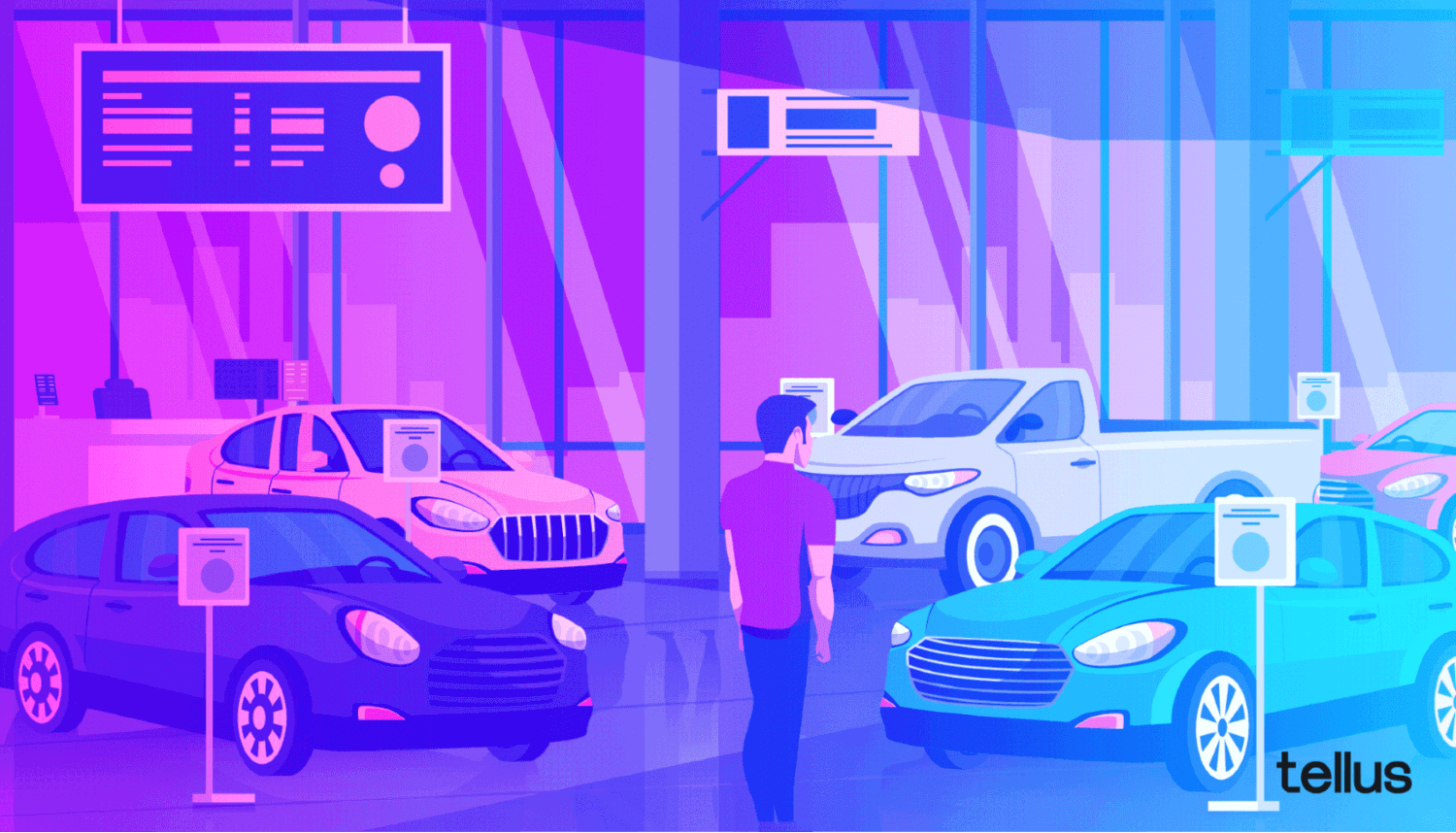
If you can get a couple of dealerships on the phone trying to undercut each other, chances are you’re going to walk away with the best possible price.
Avoid getting unnecessary extras, add-ons, and upgrades
Think carefully about if you really need extra features like a sunroof, heated seats, a leather interior, or other nice-to-have features that’ll add thousands of dollars to the cost of your car.
Bring a friend
If you’re not very knowledgeable about cars, it can help to bring a family member or friend who is. They can help you cut through the technical jargon and buzzwords that the salesperson will throw at you and get you the vehicle that you actually need.
Even just having someone there to back you up for moral support can make the entire process easier. Psychologically, it’ll feel much easier to negotiate with two people against one.




